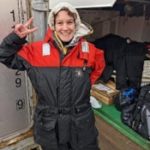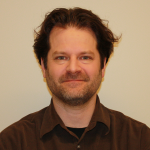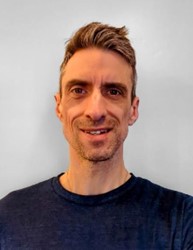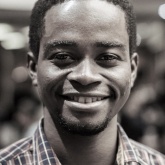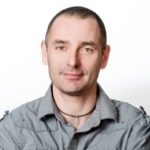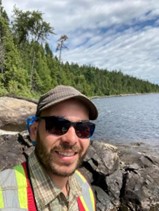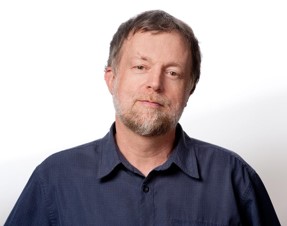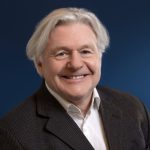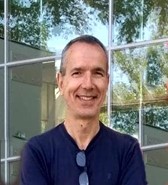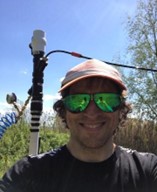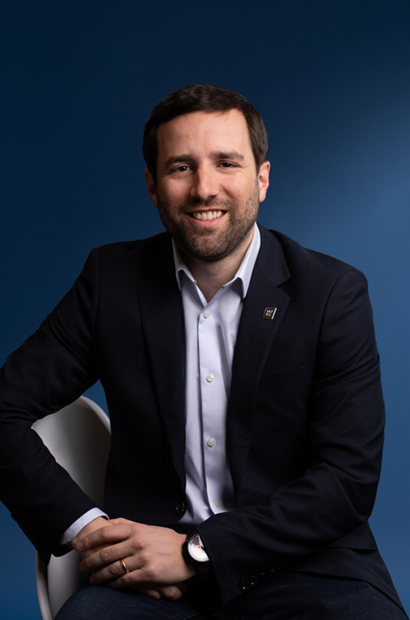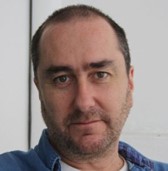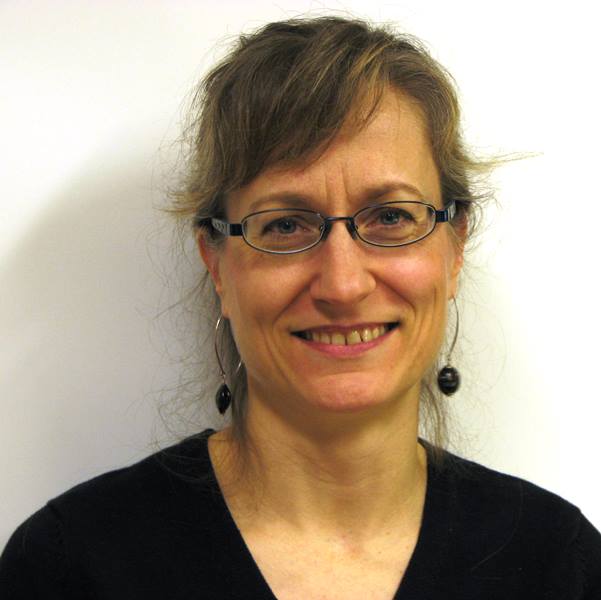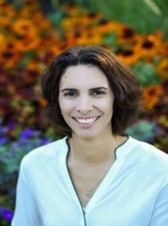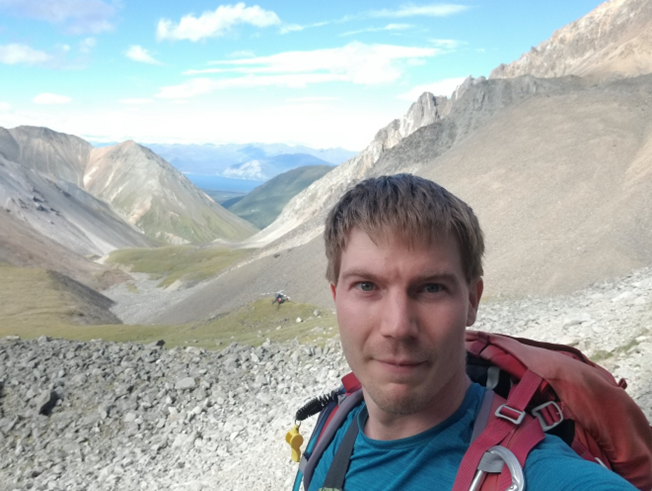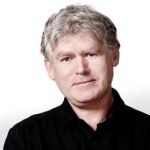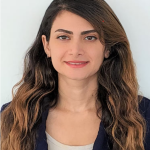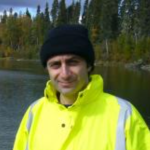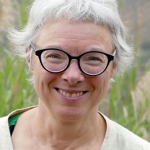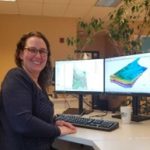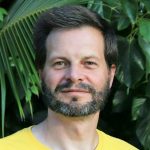Igneous petrology and high-temperature geochemistry
His research interests include igneous petrology, geochemistry, ophiolites, cumulative processes, partition coefficients, Archean tectonics, anorthosites, and continental basalts.
Isotopic geochemistry
Her work focuses on groundwater geochemistry, particularly isotope geochemistry. Whether used to understand regional water flow, to track contaminants in groundwater and surface water, or to understand the interactions between deep geological units and shallow aquifers, isotope geochemistry can provide concrete solutions to complex environmental problems.
Marine geology and data analysis
Her research focuses on the marine and subsurface geology of northern and eastern Canada to better understand the regional geological framework. Her projects include the interpretation of seismic reflection data and the integration of geoscientific data into 2D and 3D interpretation environments to perform spatial analysis of geological contexts.
Structural geology
His research focuses on regional structural geology, tectonics, and economic geology. His research interests include regional structural geology and the study of the geological context and structural controls of gold deposits in various geological environments across Canada.
Remote sensing and hydrology
His work focuses on the development of methods for using remote sensing data and geomatic tools to estimate and monitor water resources, both locally and regionally. His research interests combine in situ observation methods, statistical modelling, the synoptic quality of remote sensing data and the spatial processing capacity of geomatic tools.
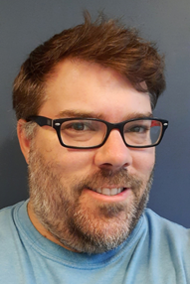
Geothermal energy
His research focuses on the assessment of geothermal resources in sedimentary basins and remote northern communities in Canada. He also specializes in underground geological storage and natural hydrogen. He works in Professor Jasmin Raymond’s team.
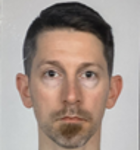
Environmental sedimentology
Geologist specializing in soil decontamination, his research focuses on sedimentology and palaeoclimatology. He has transdisciplinary skills and training (operation of µ-XRF scanner [ITRAX], SEM, laser granulometer, CT-Scan, optimization of experimental set-ups, training and support for students, coordination of field campaigns on land, water and ice). He works in Professor Pierre Francus’ team.
Geophysics
He specializes in seismic methods. His research interests focus on processing, modelling and analyzing seismic data to apply to subsurface mapping and estimation of physical properties of geological media.
Petrology and isotopic geochemistry
He is a petrologist and isotope geochemist whose research focuses on the application of stable isotope geochemistry to mineralogy and petrology, marine geology, environmental geology, and ore geology. He employs a range of isotope techniques to examine processes at the Earth’s surface and the evolution of the upper mantle through alkaline magmatism.
Environmental sedimentology
His research interests lie in the study of current and past lake and marine sediments for the reconstruction of paleoclimates and paleoenvironments. His research is interdisciplinary in nature. His most recent projects focused on varved (annually laminated) sediments in the Arctic regions.
Applied geophysics
He is interested in modelling and imaging in applied geophysics, particularly for the development of geophysical tools that enable the quantitative characterization of aquifer reservoirs. Geological sequestration of CO2 is one of the many potential applications of this work
Geoscientific data assimilation
He works on the integration of geoscientific methods to improve the characterization of groundwater resources, economic minerals, and hydrocarbon resources in order to monitor and predict their evolution over time. More specifically, he is interested in data integration by ensemble methods and artificial intelligence, characterization of resources by quantitative assimilation of data from multiple sources, and monitoring and prediction of coastal aquifers.
Tectonics
His research focuses on the evolution of tectonic styles over time and their impact on mineralized systems. He uses metamorphic rocks as evidence of physico-chemical processes. Additionally, he studies the rheological characteristics of different crustal levels and the production and mobility of mineralizing fluids in the Earth’s crust.
Structural geology
His works mainly consist in field studies and interpretation of geophysical data (mainly gravity and aeromagnetic) applied to structural controls of mineralization and regional and Archaean tectonics. His research integrates physical modelling in the Physical Simulation Laboratory.
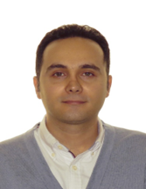
Geomecanics
His research and expertise covers coupled and multiphase THM geomechanical modelling of rock masses, constitutive modelling, seismic analysis of geo-infrastructure and numerical modelling. He also has experience in tunnel engineering, rock mechanics, constitutive and numerical modelling of geomaterials and soil improvement. He works in Professor Renaud Soucy La Roche’s team.
Environmental remote sensing and geomatics
His research and teaching interests include mainly geomatics, remote sensing, and the analysis of Earth observations, optical and synthetic aperture radar, through approaches using artificial intelligence and machine learning for urban and agro-environmental applications.
Geomatics and data processing
His experience in geomatics and data processing includes a significant focus on geoscience programming and systems development across a range of languages and infrastructure platforms.
Hydrogeology
His research interests are in situ restoration of contaminated groundwater and soils, and aquifer characterization and management. His work is carried out both in the laboratory and in the field.
Hydrogeological modelling
His work focuses on mathematical modelling and numerical simulation applied to hydrology and hydrogeology.
Natural hazards
His research is centered on the advancement and integration of standardized methods and instruments for seismic risk assessment. Additionally, he is dedicated to fostering understanding, acceptance, and extensive implementation of these techniques among key stakeholders, including local public safety agencies and emergency management officials.
Hydrogeology and numerical modelling
He is an expert in groundwater flow processes in heterogeneous sedimentary and fractured environments, their interaction with surface water, and their integration into the hydrological cycle. He is also developing high-resolution imaging methods to map aquifer flow structures.
Sequestration and use of CO2
His research interests focus on the treatment of gases in industrial chimneys. He develops innovative technologies, for example to treat industrial carbon dioxide (CO2) by mineral carbonation.

Structural geology and metallogeny
His research focuses on the metallogeny of precious metals (Au, Ag) and base metals (Cu, Zn) in the Archean Abitibi greenstone belt. Part of his work involves gathering geological and structural information in the field and defining mineralizing events and the factors controlling mineralization.
Geosciences
The geological processes behind mountain ranges, sedimentary basins and their resources are at the heart of his research. His multidisciplinary approach includes field geology, tectonics and geophysics.
Geothermal energy
His research interests are in heat transfer applied to Earth sciences. His work focuses on very low to high temperature geothermal resources, natural hydrogen, and the underground storage of green hydrogen.
Hydrogeology, numerical modelling, and geothermal energy
She leads projects examining the potential impact of oil and gas activities on groundwater, with a particular focus on the potential for fluid migration to the surface. She also works in geothermal energy, assessing the potential for heat production from relatively deep wells (1-3 km).
Volcanology and economic geology
He is a specialist in physical volcanology, geochemistry, and mineral deposits. He works on magma fragmentation, monogenetic and submarine volcanism. He is also interested in mineral deposits associated with volcanic activity and their geological environment.
Metallogeny and igneous petrology
Her research focuses on the study of volcanic and intrusive rocks hosting magmatic ore deposits, and rare metal mineralization. Her works focus on the formation mechanisms of these mineral deposits and on petrogenesis and geodynamic setting of their igneous host rocks.
Igneous petrology
Her research focuses on understanding the magmatic systems and processes that are responsible for the formation and distribution of critical metal deposits. Using a multidisciplinary approach, her aim is to decipher the petrogenetic and geochemical signature of the magmatic system of alkali and rare metal ores in the Grenville province.
Structural geology
He studies tectonic processes in convergence zones with a specific focus on the mid-crustal evolution of continent-continent and accretionary orogens. He uses a broad range of methods to describe tectonic systems as comprehensively as possible.
Coastal and fluvial hydrodynamics
His research focuses on the resilience of coastal and riverside communities to flooding and erosion, and aims to discover the potential of natural ecosystems in mitigating these risks. He leads the INRS Environmental Hydraulics Laboratory.
Applied geosciences
His research projects, mainly based on geophysical and geochemical studies, cover a wide range of applications from mining geophysics to marine geoscience, and even archaeology.
Hydrogeology and geostatistics
His current research focuses on northern hydrogeological studies of multiphysical flow in sublacustrine taliks and under rivers, the development of new methods for stochastic modelling of groundwater recharge, and the development of approaches for spatio-temporal modelling of atmospheric dispersion of metals in soils using geostatistics and machine learning. This work will provide a better understanding of hydrogeological processes and model uncertainty, enabling better management and protection of resources.
Geophysics and artificial intelligence
Her work is primarily focused on improving the resolution of magnetic data using deep learning algorithms. She also works on predictive mapping using neural networks.
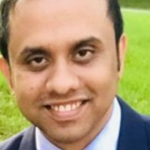
Geochmistry and hydrogeology
Low-temperature geochemistry
His current research projects are focused on the use of existing and new methods in applied isotope geochemistry to understand the environmental impacts associated with the development of Canada’s unconventional energy resources.
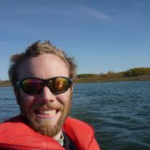
Low-temperature geochemistry

Coastal engineering and geotechnics
Metallogeny and petrology
Her research focuses on 1) metasomatic iron and alkali-calcic mineral systems and their iron oxide copper-gold (IOCG) and affiliated deposits of critical minerals and base and precious metals; 2) the Grenville and Bear geological provinces; 3) mineral deposits metamorphosed to high grades; and 4) potassic alkaline magmatism.
Petrophysics, carbon storage and sedimentology
Her research interests are sedimentology and stratigraphy of sedimentary basins, geological carbon storage, petrophysics and thermal properties of sedimentary rocks, and also CT scanning applied to natural resources (oil and gas, geothermal energy, groundwater).
Metallogeny and volcanology
His research focuses on orthomagmatic Ni-Cu-PGE, Cr-PGE, and Fe-Ti-V mineralization associated with mafic and ultramafic rocks in diverse geologic environments across Canada. He is also interested in the physical volcanology, geochemistry, and petrogenesis of komatiites in the Precambrian shield.
3D geological modelling and geoscience data management
Specialist in 3D geological modelling, geographic information systems (GIS), and geoscience data management.

Hydrogeology
His research focuses on water resource management in Quebec in the context of climate change. His projects include groundwater resource characterization, aquifer recharge modelling, assessment of water needs and uses (agricultural, municipal, residential and industrial), definition of water stress indicators, development of a groundwater status bulletin, and elaboration of tools for operating the RSESQ (groundwater monitoring network in Quebec). He works in Professor Daniel Paradis’ team
Environmental geoscience
Research manager at the Geological Survey of Canada since 2014, he manages the federal Environmental Geoscience Program, supervising around 15 research projects across the country. He was also head of the “Environment and Energy” subdivision at GSC-Quebec, managing a team of 25 to 30 scientists and two laboratories. His sub-division has now refocused on the environment and groundwater, and includes a stable isotope geochemistry laboratory and a staff of some 15.
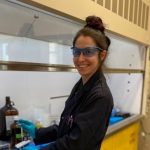
Isotopic geochemistry
Lab chemist in the research team of Jason Ahad.

Igneous petrology and geochemical modelling
Petrologist specializing in isotope geochemistry and granite, he studies magma generation and diversification. His research focuses on the geochemistry of volcanic rocks in Canada’s Abitibi greenstone belt and their relationship to volcanogenic massive sulphide (VMS) deposits. He uses the magma chamber simulator (MCS) to model the processes that explain the diversity of these volcanic rocks. He works in Professor Pierre-Simon Ross’ team.

Quaternary geology and geomorphology
Specialist in Quaternary geology, he is interested in the evolution of glacial landscapes and the dynamics of ancient ice caps. His expertise includes geomorphological and surface geology mapping, analysis of basal thermal regimes of ice sheets, and characterization of glacial sediments. He uses mapping techniques based on field and satellite data, and GIS modelling. By integrating geochronology (cosmogenic nuclides, luminescence) and geochemical analyses, he seeks to reconstruct the geometry and dynamics of past ice sheets and to understand how they shaped the landscapes we see today in the Canadian Arctic and North America.

Environmental chemistry and toxicology
Her research work aims at understanding the processes that govern the interactions between metals and aquatic organisms. Of particular interest is the study of bioavailability of metals in natural waters. This research programme is divided into three main topics: 1) Characterization of the geochemistry of metals in natural waters; 2) Characterization of the influence of environmental and biological variables on the bioavailability of metals; 3) Exploration of the biological fate of metals. This research work takes place in the laboratory and in the field, and covers a wide range of aquatic organisms, environments, and regions, and relies on techniques and concepts from analytical chemistry, biogeochemistry, biochemistry, toxicology, physiology, and ecology.

Seismic processing, deep learning, inversion
Development and application of emerging seismic processing techniques.



